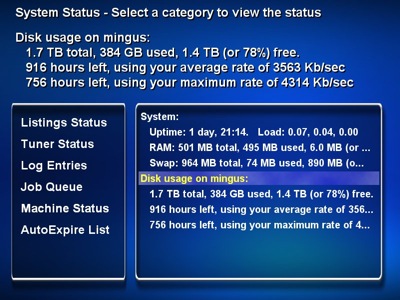I've been trying to enhance my mobile lifestyle lately. Or something.
Basically, as much as I love my MacBook Pro (oh yeah, guess I didn't blog that yet), I've really been hoping for something more portable that I could keep on my person at all times - you know, to handle any trouble that comes up whilst on call. That's the excuse, anyway - I also wanted a device that had a real web browser, a real mail client, GPS, wifi, and good media playback capabilities...
I was really, REALLY hoping that the "something" would be a phone, so I could ditch my existing unit and just replace it with a single device. The Nokia N95 comes really damn close, but its price tag is astronomical. Not only that, but it lacks compatibility with American 3G networks, which I really, really want in my next phone device (since we actually have 3G here...).
So, I went a different route - keep my aging W600i (which is a nice device, but old technology - at least it does EDGE) and "compliment" it with another gizmo for my mobile computing needs. Then, I'll pick up a cheap 3G phone (when such a thing exists) and ultimately plan on re-converging back to a single gadget that meets all my needs (once such a thing comes to exist).
The main advantage in this plan is that I'm now dealing with separate, less expensive components that I won't care as much about when they break or become obsolete to be replaced by my dream device.
Anyway, the N800 - it's pretty sweet. Packing a 300-ish Mhz ARM processor and a gorgeous display, it pegs media playback. Sure, I have to transcode stuff to a format that it's happy with, but that's fairly trivial with mencoder and once I've done so it works like a champ.
The browser is nice, too. It's got Opera - real Opera, not some crappy mini opera - and some oldish version of Flash. It can play stuff on youtube, even (if a bit choppily).
Wifi works great - good range, good speed. It's got bluetooth, and you can use your phone for connectivity in a pinch (and that EDGE connection, as much as it sucks, can be a really nice thing if you're desperate).
Where the n800 really wins, though, is hackability.
The device, and the Nokia 770 before it, runs a customized version of Debian and a slick Nokia-designed UI. Together, the platform is known as "Maemo," and it has all of the goodies you'd hope for from a real Linux device. Tons of applications have been ported to it, including xterm (a must), ssh (another must), openvpn (REALLY nice to have!), minimo (stripped down Mozilla browser), and... well, a crapload of other stuff.
There are also several apps unique to the device which specifically extend its functionality. There's this thing called maemo Mapper, which lets you use google maps in conjunction with a bluetooth GPS device to get live navigation. There's an FM radio app, there's an RSS reader, there's a weather app...
Basically, the N800 out of the box is exactly what it says it is - a web browsing appliance. But once you start tacking on the extra software, it becomes a full fledged mobile Linux computer. At about the size of a PDA (but with a MUCH nicer display), it's almost exactly what I was looking for.
Oh - and if you plan to ssh from the device, you can even hook up a portable bluetooth keyboard and make it a fully functional terminal. Sexy, huh?
